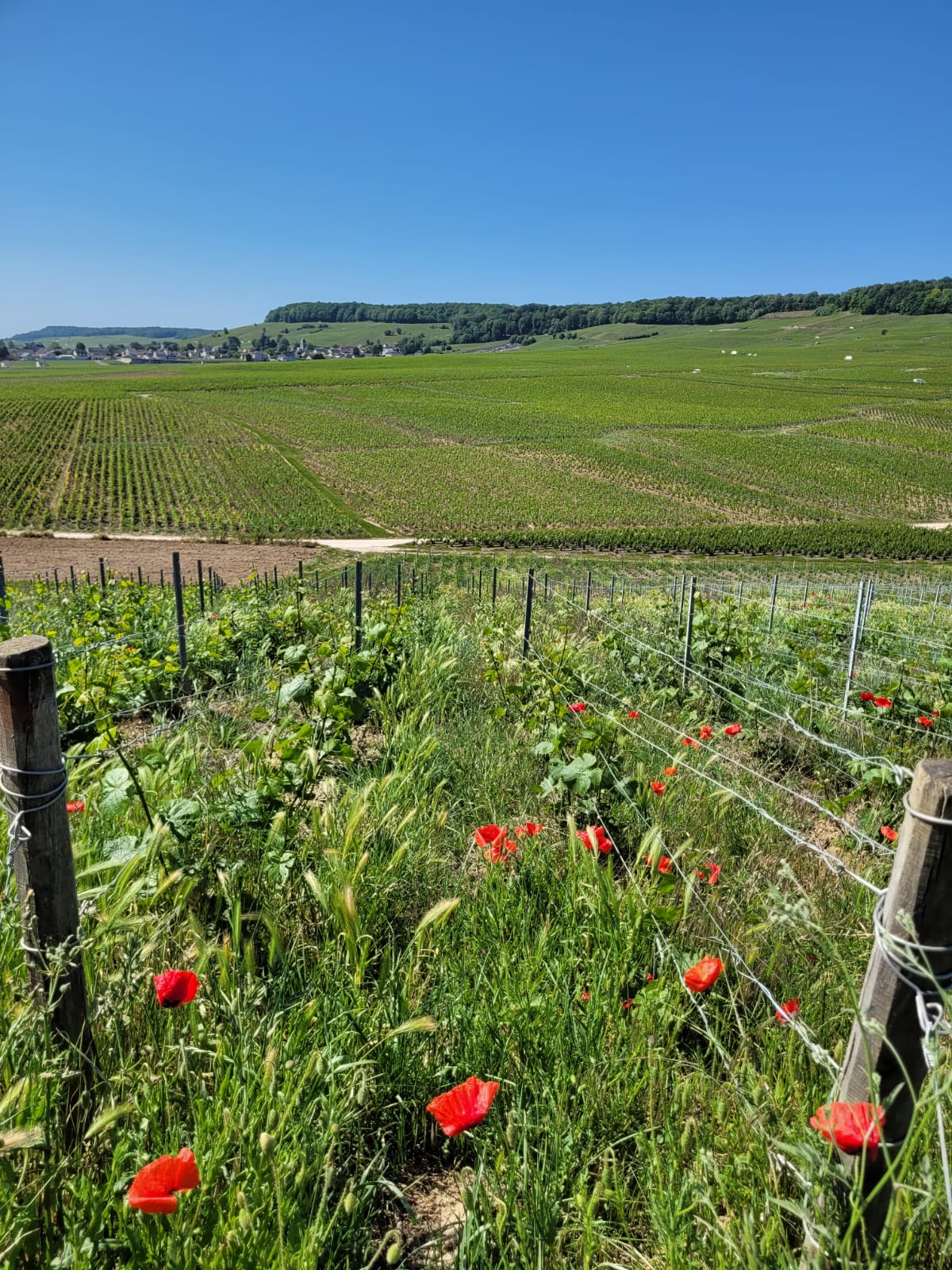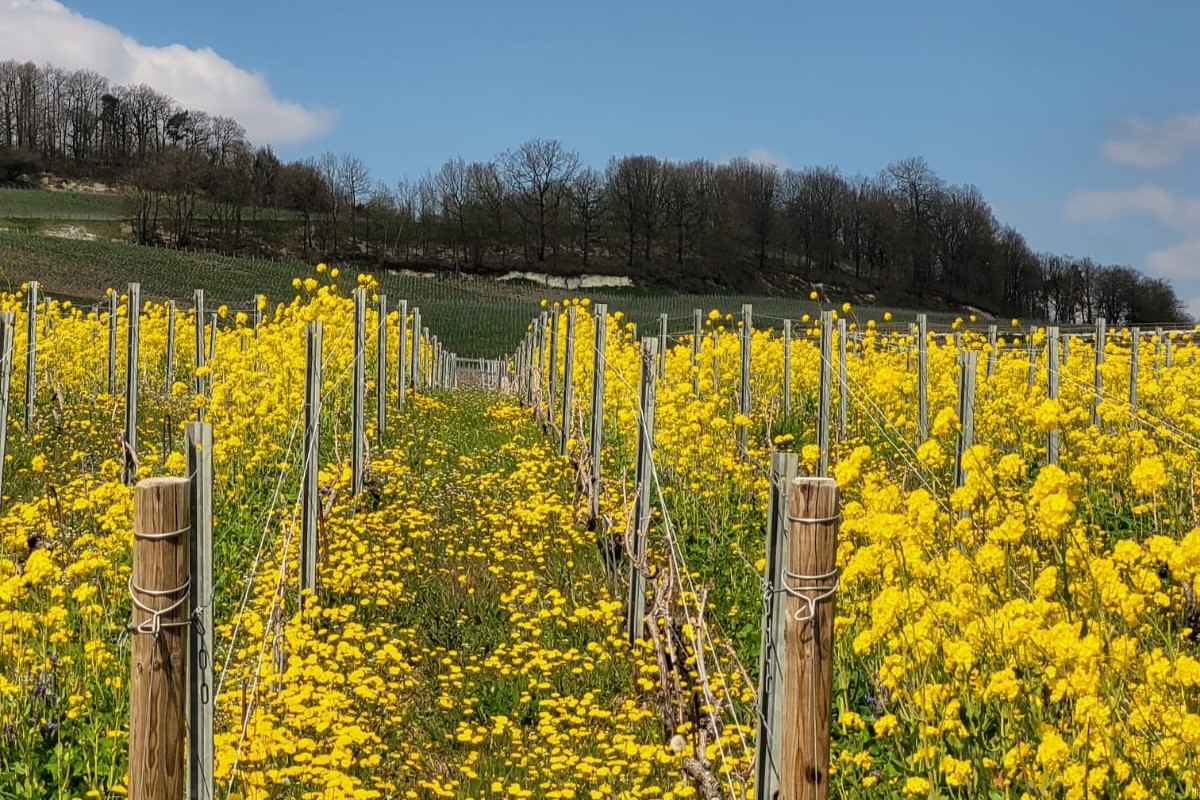Vitiforestry or vineyard agroforestry is when other trees or plants are planted amidst the plots of vines. This method is being used more and more in the Champagne region for its many environmental benefits!

Once, it was common to see flowers in the middle of the vineyards, especially roses that could help anticipate the risk of mildew. Then with the increased use of chemical treatments against diseases and parasites, they became scarce in the Champagne landscape.
Small winegrowers have been slowly bringing this process back since 2018, but it’s mostly thanks to the champagne house Ruinart that vitiforestry is back in fashion. In 2021, they planted thousands of bushes and hedges in 40 hectares of experimental plots in Taissy. In Avize, the champagne houses Mumm et Perrier-Jouët are experimenting with “vegetation covers” in their vineyards.
The goal? Improve viticulture’s impact on the environment
The Champagne region is aiming for carbon neutrality by 2050. Vitiforestry contributes to reaching that goal by reducing greenhouse gas emissions and holding in carbon in the soil.
Trees help fight against the effects of climate change in the vineyards: they can help reduce the temperate by 1°C in summer or gain 1°C in winter, limiting the negative consequences of extreme weather (heatwave or frost) and therefore maintaining the quality of the grapes. They can also protect vines from the wind.
Vitiforestry is also good for revitalizing the soil by bringing organic matter, boosting biodiversity and regulating the water intake, therefore guaranteeing better fertility.
One of the other main benefits is the creation of habitats for many species, including some endangered ones. Vitiforestry stimulates the development of biodiversity that is beneficial for the vines (ladybugs, birds, bats, birds of prey…) with species that are especially useful against parasites, meaning the need for pesticides is reduced.
This practice requires particular care from the winegrowers
However, this method also has some downsides. For example, the shade created by trees can impact the vine’s yield. Winegrowers also have to pay close attention to make sure the trees leave enough water in the soil for the vines.
They need to pick the right types of trees and plants for the vineyards. Local species that already naturally occur in the area are favored since they are suitable for the local fauna. Obviously, they also need to be compatible with the vines with no risk of bringing disease.
Vitiforestry in Champagne is evolving thanks to the winegrowers and champagne houses sharing their results with the Champagne Committee. We can already see more and more flowers between the rows of vines, trees surrounding the plots… It should become even more widespread in the coming years as Champagne continues its environmental efforts.


